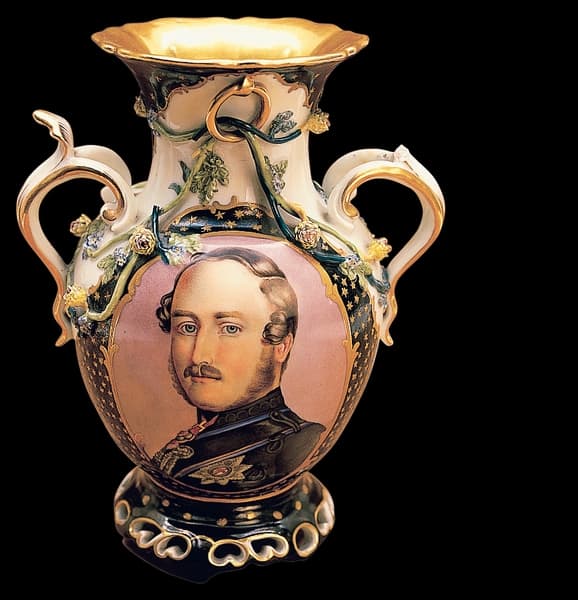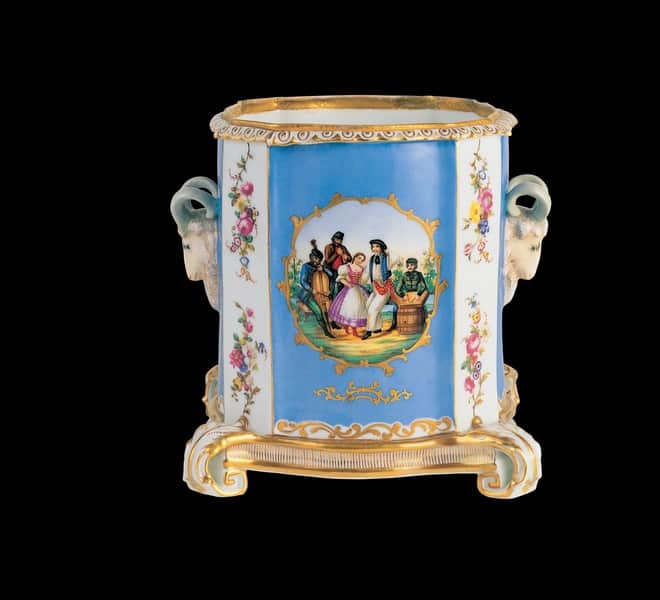Room II.
SUCCESSES
Fischer's business connections brought him into contact with the porcelain masterpieces found in the aristocratic collections. These were a challenge to him. Before reproducing such a piece, he would make dozens of experiments. His interest went below the surface. He would analyse and reinterpret the form and the ornamentation and try to copy what he found faithfully, to meet expectations and out of respect and recognition for the porcelain artworks of the previous century. Fischer' s historical approach was a historicism that extended to the raw materials, the glazes and the paints.
Herend's first international test, at the Great Exhibition of 1851 in London, already won Fischer the professional respect of his contemporaries, which he retained for many decades to come.
The Fischer Rooms contain unique objects or ones made in short runs. Among the typically 'Herend' pieces, there are many on which the forms and patterns of past European porcelain reappear. The displays set out to convey the abundance, variety and virtuosity that the Fischer period in Herend's history best represents.
VASE WITH PRINCE ALBERT'S PORTRAIT

Prince Albert of Saxe-Coburg-Gotha, consort of Queen Victoria of England, was the man who first mooted the idea of holding a world exhibition. The result was the Great Exhibition of 1851, held in the Crystal Palace erected in Hyde Park, London, to display world achievements in the arts and sciences. The event had the utmost importance for Mór Fischer and his porcelain factory, for which it was a highly successful début on the world market. Fischer's vase was made as a mark of respect for the prince.
RAM'S HEAD POT

Rustic genre paintings began to appear on Herend Porcelain pieces in the mid-1840s, in the fashionable Romantic style. One of the series is the brightly coloured 'goat's-head cachepot' of 1862 designed to conceal a common flowerpot. It stands on gilded feet and bears on each side a scene of vintage festivities in a wine cellar, in a medallion with gilded frame on a light-blue ground.

